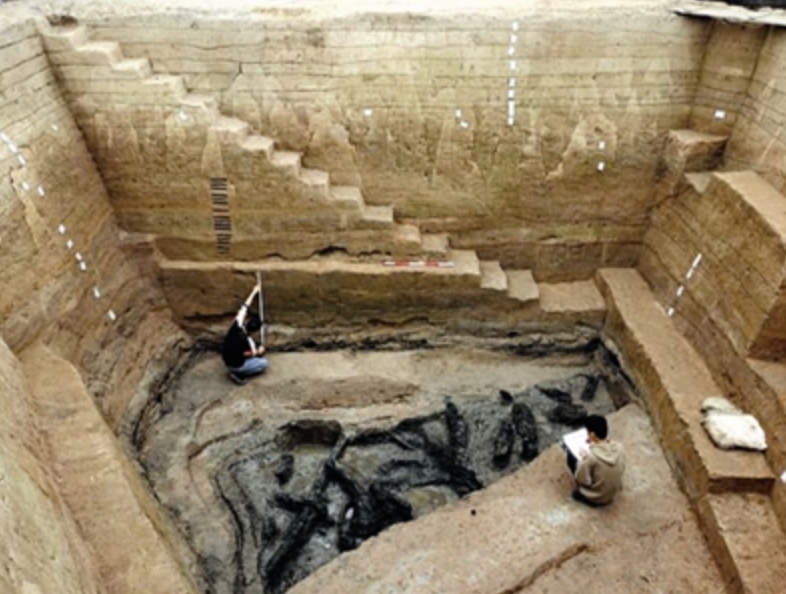Jiangkou Chenyin, a remarkable archaeological site located along the Min River in Meishan, Southwest China’s Sichuan Province, has become a focal point for historians and archaeologists worldwide. The site, often referred to as a “beach” in the archaeological community due to its riverside location, has yielded a staggering discovery of more than 70,000 relics, offering a unique window into China’s illustrious past.
This significant site has been the center of attention since the 1950s when experts and local villagers first stumbled upon historical treasures washed up along the riverbank. In a recent excavation, archaeologists have unearthed a total of 76,000 artifacts, making it one of the most prolific archaeological sites in the region.
One of the most momentous discoveries at Jiangkou Chenyin came to light in 2005 during local urban construction, when seven silver ingots from the Ming Dynasty (1368-1644) were found. This discovery led to the naming of the site “Jiangkou Chenyin,” translating to “sunken silver in the estuary” in Chinese.
Among the myriad of treasures unearthed are several ancient seals remarkably well-preserved. A standout find is a gold seal adorned with a tiger figurine. The intricacy of the carving captures the tiger in a dynamic, roaring pose, suggesting the seal belonged to a person of high status, possibly a Yongchang Grand Marshal. While the exact identity of the marshal remains a subject of debate among historians, some speculate it could have been Zhang Xianzhong, a key figure in the peasant risings at the end of the Ming Dynasty.
Another intriguing find is a silver seal engraved with the title “Governor of Yongchang,” along with various other gold seals. The historical narrative suggests that Zhang Xianzhong, during his southward journey amid the peasant movement, may have faced an ambush at Jiangkou Chenyin, leading to the sinking of a treasure-laden ship. This theory aligns with the site’s reputation for gold and silver discoveries.
The first excavation of the site in 2017 revealed an assortment of artifacts, ranging from pottery and copper coins to personal items like jade hairpins, mirrors, thimbles, and spoons. These findings not only offer insight into the daily lives of people during the late Ming and early Qing Dynasties (1644-1911) but also paint a vivid portrait of the social customs and cultural practices of the era.
To accommodate these significant historical discoveries, a museum dedicated to the Jiangkou Chenyin site is set to open for trial operation in October 2024. This museum, along with other planned research centers, represents a burgeoning trend in integrating historical and archaeological sites with cultural tourism and public education initiatives. Through these facilities, the rich tapestry of China’s history, as revealed by the Jiangkou Chenyin site, will be preserved and shared with both local and international audiences, enhancing the understanding and appreciation of China’s cultural heritage.
READ MORE:
